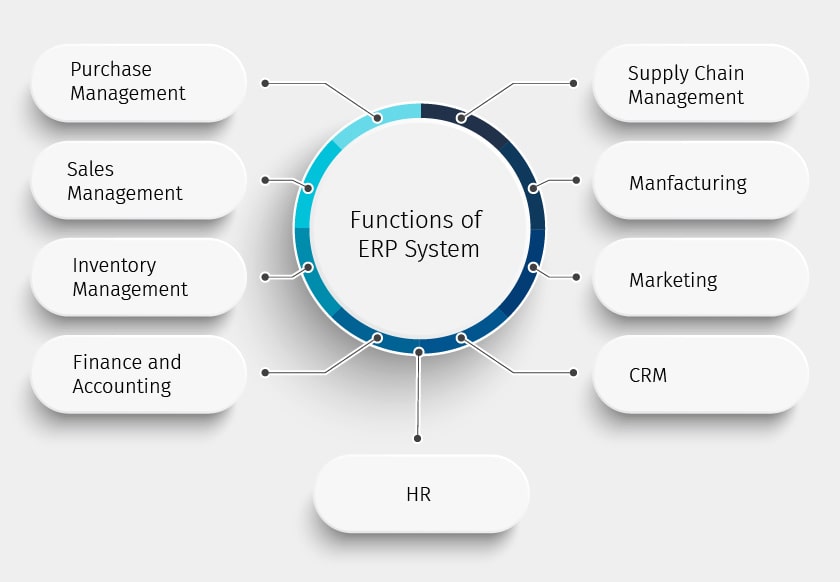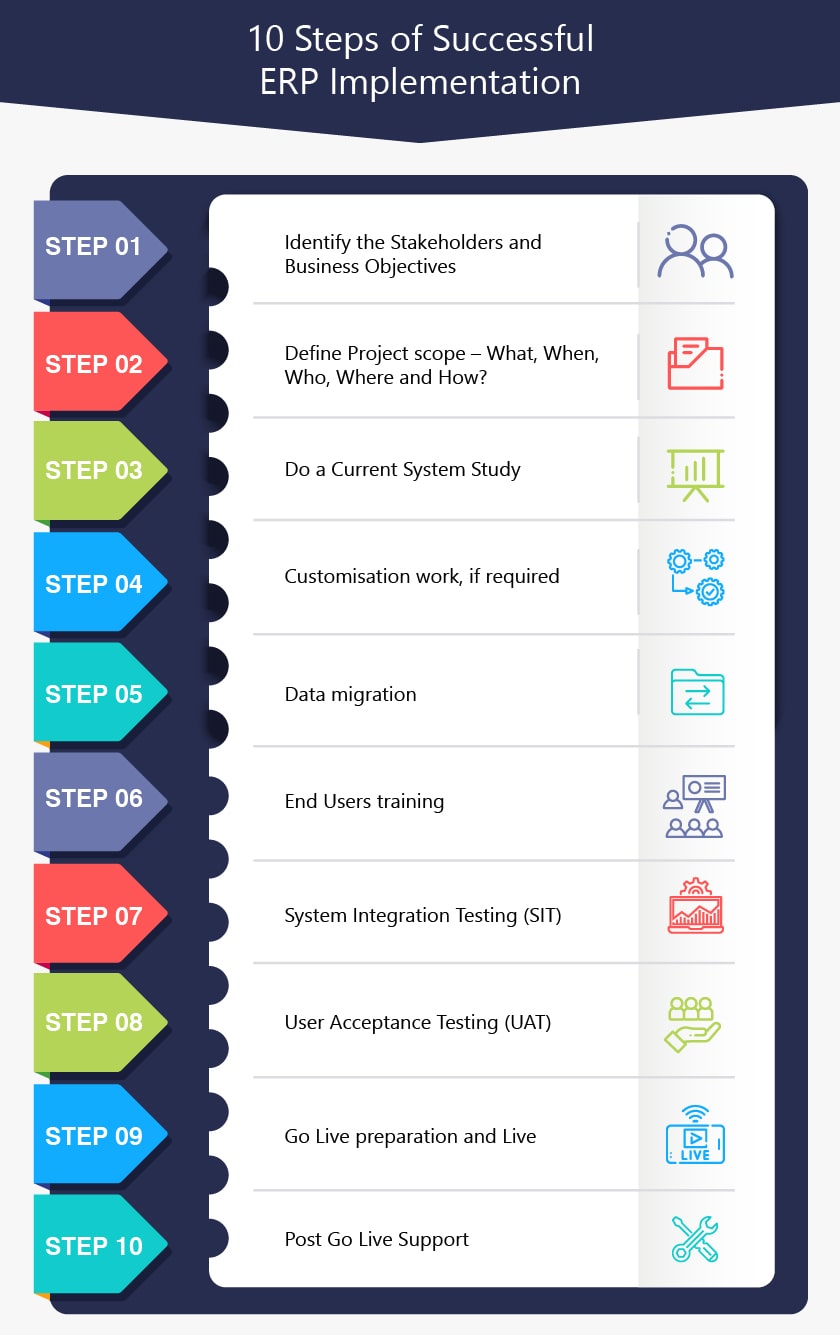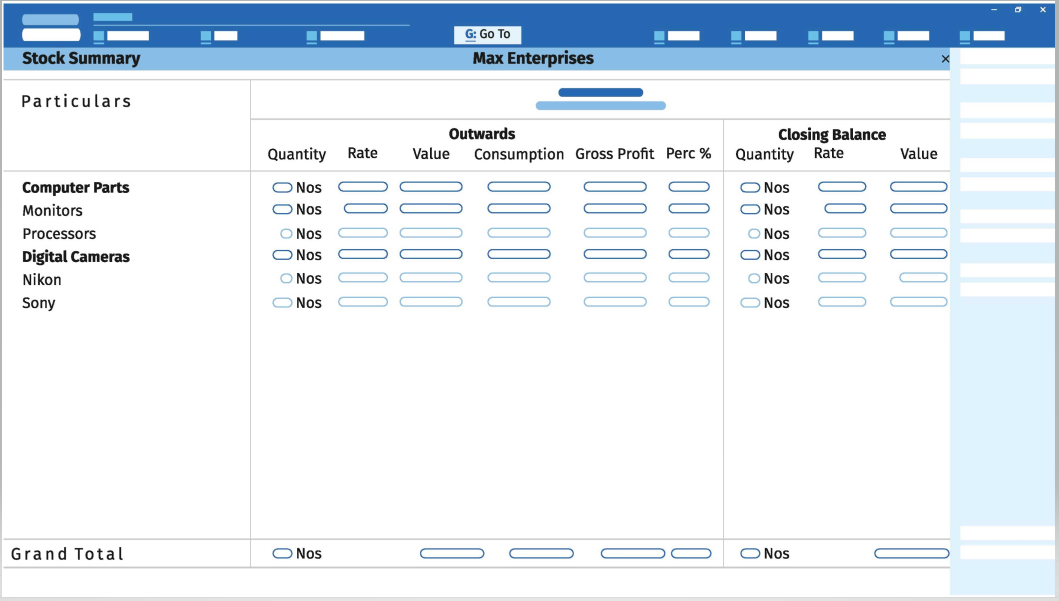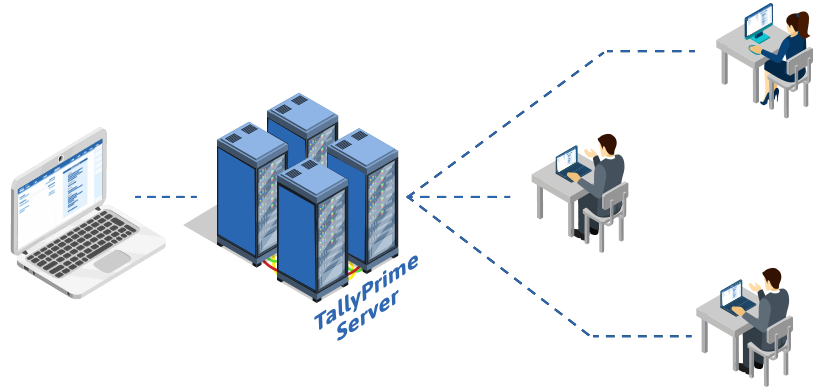ERP Implementation Flow
An ERP system manages all the important functions of a company from end to end. This includes finances, inventory, sales, human resources, and other related components. It helps manage and connect all the company’s departments so that there is a seamless and instant flow of data. When implemented correctly, ERP can improve productivity, turnaround times, efficiency, and employee satisfaction. ERP also reduces red pate and slow processes caused by the slow movement of data across the departments and different functions of the company.
The process of planning, configuring, and deploying an ERP system in a company is called ERP implementation. This can be as short as a few weeks and as long as a few months depending on the size and complexity of the company’s operations. ERP implementation is a longer process because it affects multiple functions within the company.
ERP implementation has the best results when the company chooses a less busy time to do it. The company should also be clear about its requirements so that there is a detailed design and configuration process and extensive testing before the actual deployment. Keeping the implementation on schedule requires a structured and disciplined approach to the design as well as the implementation of the software.

Tally Software(ERP) Implementation
ERP refers to Enterprise Resource Planning software which integrates various functions of a business into a single unified system. A business, irrespective of size, has to deal with various function like purchase management, sales management, material management, payroll etc. Having a separate system to manage each of these functions is a nightmare. Here is why Enterprise Resource Planning (ERP) software helps the business.
Enterprise Resources Planning (ERP) systems bind various functions of the business into a single database. The following are some of the important business functions you can manage using ERP software.
10 Steps of Successful ERP Implementation
Step 1: Identify the Stakeholders and Business Objectives
Step 2: Define Project scope What, When, Who, Where and How?
Step 3: Do a Current System Study
Step 4: Customisation work, if required
Step 5: Data migration
Step 6: End Users training
Step 7: System Integration Testing (SIT)
Step 8: User Acceptance Testing (UAT)
Step 9: Go Live preparation and Live
Step 10: Post Go Live Support

The stages of an ERP implementation are:
Define scope and objectives
A company that defines precisely what is required from the ERP system makes the ERP implementation cycle easier.
Select the right ERP system
There are many different ERP systems with a range of capabilities. Selecting the right one can make your ERP implementation and usage easy and gain you all the benefits of ERP. TallyPrime is an ERP software that is designed to be very customizable and has been implemented in many different companies across the globe. Its adaptability and the experience of the deploying team make the ERP life cycle short and effective.
Create an implementation plan
Work with the company team members to create an implementation plan that will suit the company.
Define phases of implementation
Define the steps of implementation and inform all the personnel involved so that they will be fully prepared with all the required data and information.
Make an urgent doable schedule
The quicker the ERP system is implemented across all the modules, the less it will inconvenience any departments. So, speed up the implementation schedule to be as quick as possible without sacrificing accuracy and efficiency.
Make a communication plan
When the personnel know who to contact and when there will be better cooperation and quicker implementation of the new system.
Arrange mid-way approvals
Approvals by key members at each stage makes the process easier.
Plan your testing
Testing should be carried out only after sufficient test data and the system is widely deployed. So, plan the testing schedule for the best results.
Migrate business data
Data should be migrated correctly and completely
Prepare for the change
Prepare all the personnel who will be using the system for the change in process by migrating to the new ERP system.
Plan your go-live
An exciting and festive go-live builds goodwill and creates a positive mindset in all the people who will use it.
Support and maintenance
A great ERP provider will give their clients quick and effective support. They will be open to feedback.


